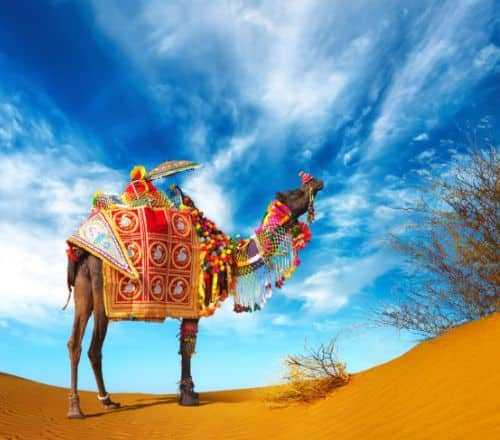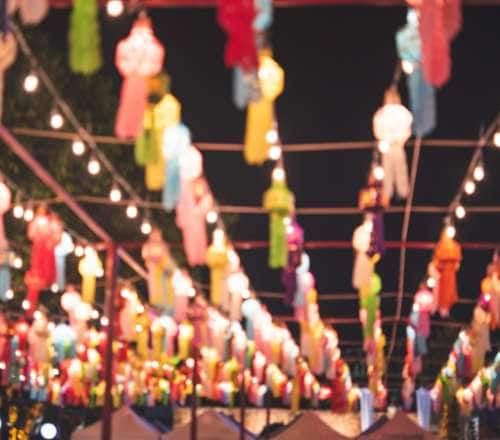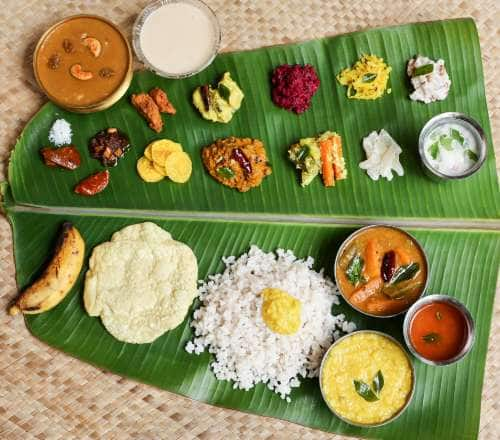Stay logged in to proceed with bookings, orders and offers.
On changing the terminal, you will loose items in your cart. Are you sure you want to change your terminal?
Marigolds, copal incense, decorative skulls, sombreros (broad-brimmed hats), and traditional foods are just one part of the Day of the Dead celebrations in Mexico.
As I walked through the crowded streets of Guanajuato, I marvelled at the elaborate altars of remembrance. Everywhere I looked, I saw families gathered to remember their departed loved ones. The scent of copal incense filled the air. The fragrance is believed to guide ancestral spirits back to the earthly realm. The Day of the Dead can be best described as an intertwined celebration of life and death. The allure of this ancient tradition called to me with an irresistible force. After a long transatlantic flight to Leon from Newark, I took a bus to Guanajuato, in Mexico. And so, from the bustling streets of India, I traversed continents to witness the Day of the Dead—a celebration steeped in values of remembrance and reverence.
Mexico, as well as people of Mexican heritage, celebrate the Day of the Dead on the first two days of November, each year. However, the festivities for Dia de Los Muertos—as it is locally known—begin well ahead of the main event. According to Mexican beliefs, the veil between the living and the dead is the thinnest during this time. Families set up ofrendas (home altars) with photographs, memorabilia, and favourite foods of the departed, who are believed to visit Earth on these two days. These altars are adorned with marigolds and calaveras (decorative skulls). In this way, the celebration serves as an occasion to venerate their ancestors.
Located in Central Mexico, Guanajuato is a small city within an eponymous municipality. Narrow cobbled streets, winding stairways, chic bars, and the crisp mountain air lend the place a charming aura. As I arrived, the city greeted me with a whirlwind of sensory stimuli. While colourful papel picado banners fluttered in the breeze, murals made of marigolds carpeted the streets. I spotted spooky yet amusing decorations in unexpected corners. These included witches on brooms, funky skulls, and even fake skeletons sporting sombreros! Families were busy preparing their ofrendas in front of their homes. Parades wound through the streets, with their participants clad in elaborate costumes. Inspired by the people dressed in Dia de los Muertos costumes, I got skull makeup done on my face. Then I set out to explore the winding alleys, following the captivating aroma of Mexican food, marigolds, and copal incense. The menagerie of scents that filled the air was intoxicating. Taco stalls and bars offering mezcal and tequila shots added to the fun. As I explored Guanajuato, I came across the grand decorations ornamenting the stairs of Universidad de Guanajuato and Teatro Juarez. The former hosted the largest and most spectacular altar on its steps, with rows of candles lighting up the stairs. It created a surreal ambience after sunset. My last stop for the day was the Museo Momias—or the Mummy Museum—which is home to the smallest mummy in the world. The place seemed to perfectly complement the Halloween-like festivity in the city.
Such is the charm of this celebration that it compelled me to be more than just a bystander. So, I decided to dig deeper into this unique Mexican tradition and followed the locals to a graveyard to pay homage to the dead. In the cemetery, I noticed locals tending to the resting places of their ancestors. Families lovingly cleaned the weathered tombs, brushing away dry leaves, and decorating them with marigolds—symbolising the transient nature of life. They set up photo frames of the deceased and lit candles in their honour. Finally, they left offerings of food, believing the spirits would consume them when they visit the earthly plane. I felt my heart brimming with nostalgia as I reminisced about my grandparents. I found a quiet spot and set up a humble altar with their photographs, a few marigolds, and a candle. I expressed gratitude for their love and the wisdom they had bestowed upon me. I shared my triumphs and struggles, hoping they were listening. As dusk settled over the cemetery, the place looked magical, as it came alive with flickering candles; the golden lights bathing the tombstones. Songs of love and loss created a haunting symphony of remembrance. The cemetery had become a tapestry of heartfelt tributes.
What intrigued me the most about the celebration was the locals' way of honouring the life of the departed, instead of grieving their loss. As I walked away from the cemetery, I realised that the Day of the Dead is a celebration of life. It reminds us to cherish our loved ones while they are still here. It also teaches us to honour their memory long after they have departed. Saying farewell to Guanajuato was bittersweet. My heart felt heavy with profound emotions. I left, knowing I had paid my respects and expressed gratitude to my departed ancestors. The Day of the Dead deepened my appreciation for the threads that weave together countless generations. It reminded me that we are all part of a larger story.





The Adani One expressly disclaims all liability, direct and indirect, in respect to actions taken or not taken based on any or all the contents of this Blog. The Blog is an opinion of the contributor based on the collation of data from various sources and is provided only for information purpose. Adani One does not canvass, advertise, solicit, invite or induct for any product, merchandise, information, brand or any other materials mentioned in the Blog, nor does it obtain any monetary benefit from the same. Reader is advised to read and apply his/her intellect and discretion in this regard. Any Intellectual Property mentioned in this blog belongs to the rightful owner. We do not intent to claim any interest over the same.